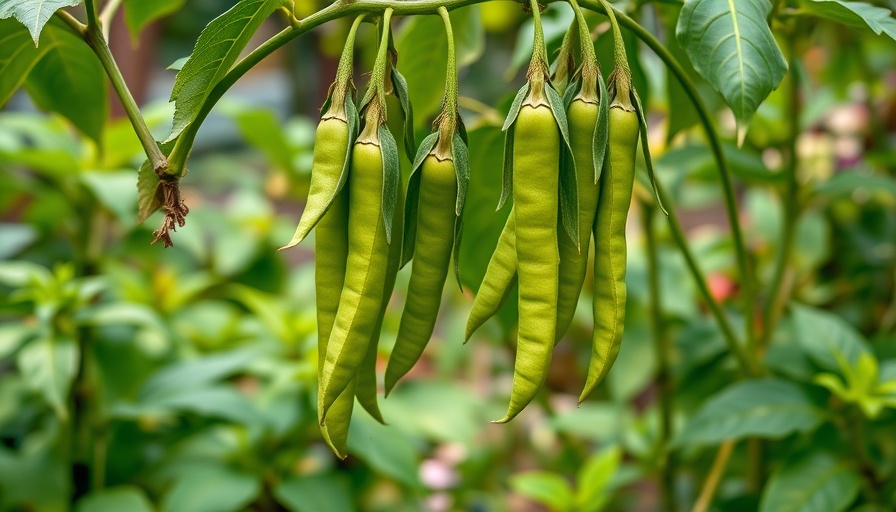
Unlock the Potential of Winged Beans in Your Garden
Winged beans, or Psophocarpus tetragonolobus, are not just another exotic plant; they’re a superfood that thrives in tropical climates! Native to Papua New Guinea and cultivated widely throughout tropical Southeast Asia, these legumes are gaining traction among gardeners and chefs alike for their incredible nutrition and culinary versatility. With four distinctive wings along the pod, they bring both beauty and function to your home garden.
Why Choose Winged Beans?
Growth and Yield: This perennial vine can reach up to 15 feet long and requires minimal space to flourish, making it ideal for urban gardening and small backyards. When grown as an annual, you can expect a bountiful harvest within a single growing season. The versatility of winged beans doesn’t stop at their cultivation; they thrive in various forms—sown directly into the soil, grown in raised beds, or even in containers.
Nutrition: Often overlooked, winged beans are packed with nutrition. The tuberous roots are comparable to potatoes, offering about 20% protein by weight, while the seeds deliver 35% protein and are rich in essential vitamins, including B1, B2, B3, B6, B9, C, A, and E. This makes them a superb addition to a plant-centric diet!
Getting Started: Sowing Winged Beans
For those interested in integrating winged beans into their gardening repertoire, here's how to get started:
- Best Time to Plant: Winged beans thrive in warm climates. Aim to sow them in the spring for optimal growth.
- Soil Conditions: They prefer loose, humus-rich, well-draining soil with a pH of 6.0-7.5. Enrich the soil with compost to boost its nutrient content.
- Watering Needs: These plants enjoy consistent moisture, particularly during germination. A good watering routine will help establish their roots.
Practical Tips for Maintenance
Knowing how to care for your winged beans can lead to an abundant harvest.
Garden Pests Control
Like any plant, winged beans can attract pests. Be vigilant for common garden pests like aphids and beetles. A gentle spray of water can often dislodge them, but organic solutions such as neem oil are also effective.
Promote Pollinators
Encourage bees and butterflies to visit your garden by planting companion flowers nearby. Being pollinator-friendly enhances your winged bean's yield potential.
Culinary Uses: Exploring the Flavor
Once harvested, winged beans can be utilized in various dishes, offering unique flavor profiles. You can enjoy them raw in salads, stir-fried, or added to soups for a nutritious boost. Their flowers are also edible, making a beautiful garnish for your meals.
Harvesting and Storing Winged Beans
Harvest your winged beans once the pods have fully matured and are easy to snap off. For optimal flavor, consume them fresh or blanch before freezing for later use. Ensure to store them in cool, ventilated areas to maintain freshness.
Final Thoughts on Winged Beans
Adding winged beans to your garden can diversify your crop and enhance your meals with their unique flavors and nutritional benefits. Whether you’re an experienced gardener or just starting out, this plant can turn your garden into a haven of healthy eating.
Start Your Gardening Adventure!
With gardening tips and starter guides available at your fingertips, why not embark on growing winged beans today? Discover the joy of cultivating your food and enjoy the journey of sustainable living right in your backyard!
 Add Row
Add Row  Add
Add 




Write A Comment